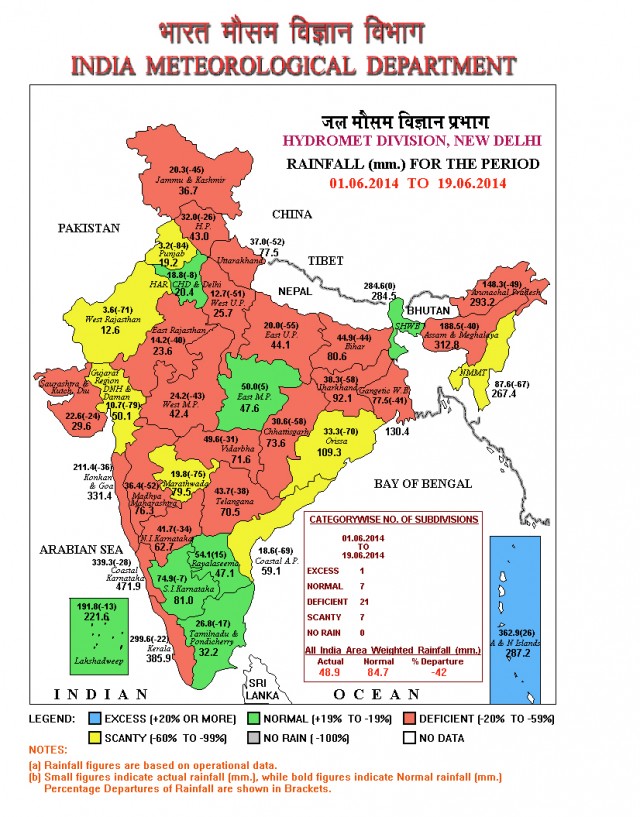20 June 2014
Monsoon 2014: late but starting to have an impact (including two good new landslide videos)
Posted by Dave Petley
Monsoon 2014
As I have noted previously, the global landslide cycle is dominated by the effects of the South Asia summer monsoon, which brings heavy and prolonged rainfall to the world’s most landslide prone region. In 2014 the monsoon has arrived late, which has meant that the level of landsliding across Pakistan, India, Nepal and Bangladesh is currently lower than is usually the case. This image, from the IMD, shows the monsoon precipitation deficit as of 19th June:

Image from IMD
..
In South Asia, the highly landslide prone regions are in SW India (Kerala for example) and of course the Himalayan region, both of which are in a state of rainfall deficit at present.
However, the monsoon front is now advancing across the region, and with it comes reports of landslides. In Nepal overnight there were two major landslide incidents:
- In Aglung VDC- 8, Nipane, in Gulmi District a landslide buried a house, leaving nine people dead and seven missing (and assuming that they were in the house the likelihood of their having survived is very low). This is the worst landslide incident in Nepal this year.
- In Khung VDC in Pyuthan district a landslide killed five people and left another injured.
Meanwhile, this very interesting landslide video has been posted on youtube:
..
This apparently occurred in Rampur, which is in Uttar Pradesh, India; the actual date of the event is not given.
Meanwhile, over in Vietnam, the rainy season is already having an impact. This video is almost surreal – do watch to the end!
..
I guess there was no way back for those motorbikes. The landslide appears to be a reactivation of a previous event in deeply weathered soil. Note the precursory slips at the front of the landslide before the final collapse – the people near to the camera certainly saw this happening. Note also the flow of water that preceded the main landslide body down the road – this is often reported (and misinterpreted) for large events.


 Dave Petley is the Vice-Chancellor of the University of Hull in the United Kingdom. His blog provides commentary and analysis of landslide events occurring worldwide, including the landslides themselves, latest research, and conferences and meetings.
Dave Petley is the Vice-Chancellor of the University of Hull in the United Kingdom. His blog provides commentary and analysis of landslide events occurring worldwide, including the landslides themselves, latest research, and conferences and meetings.